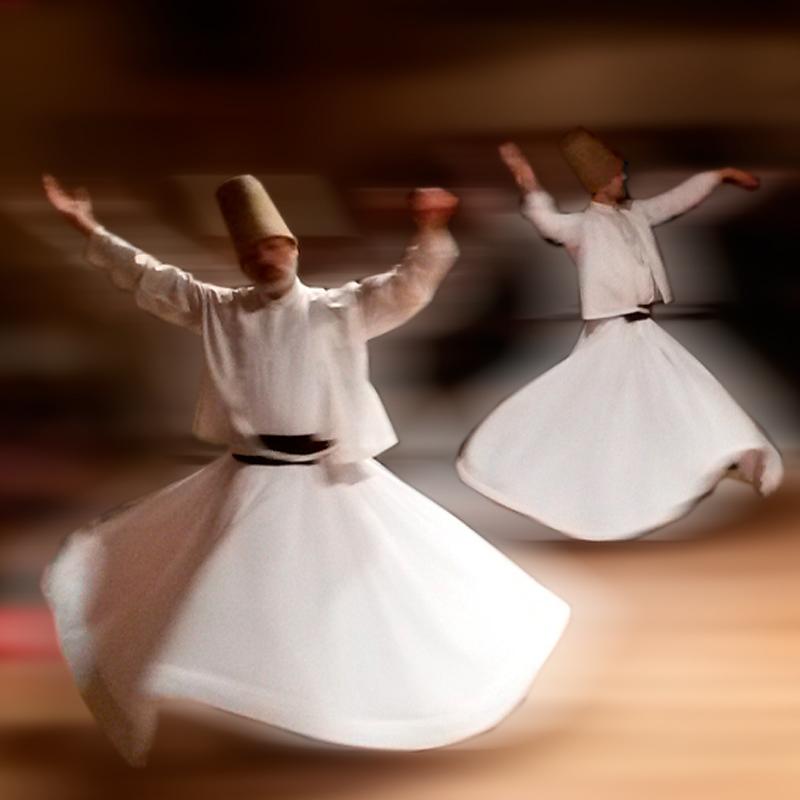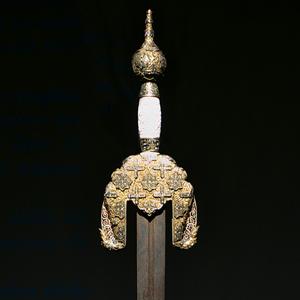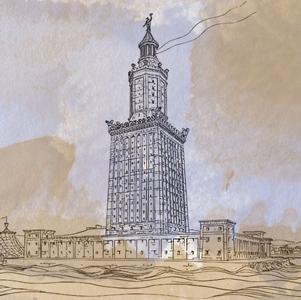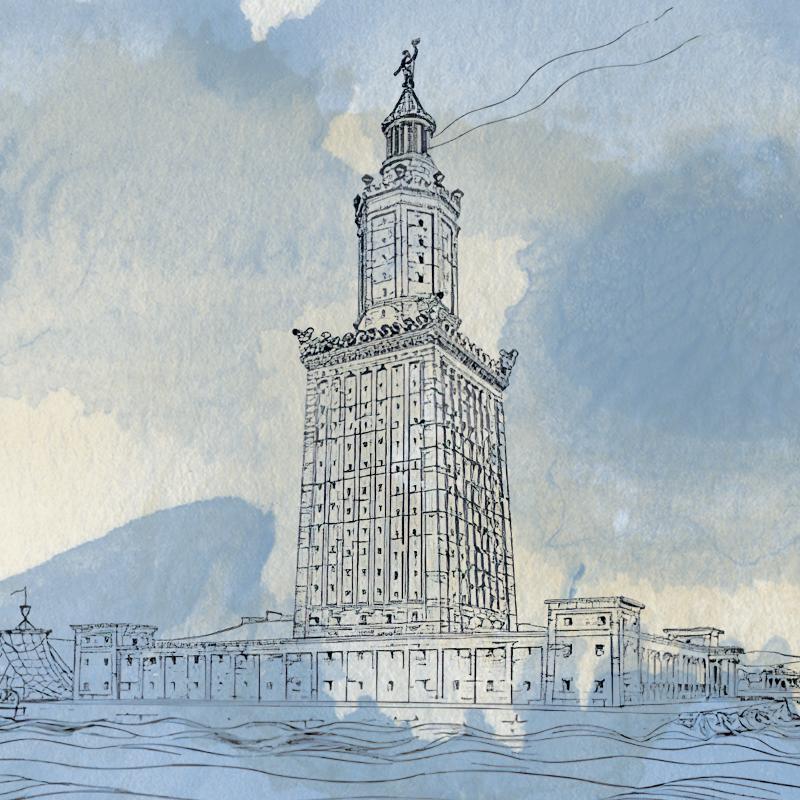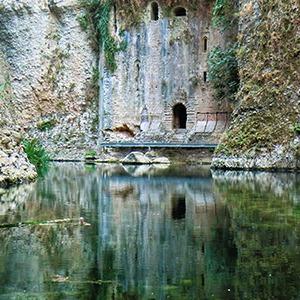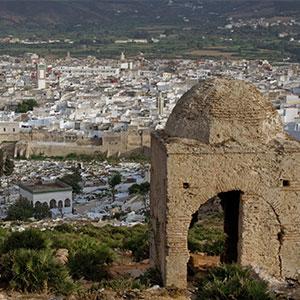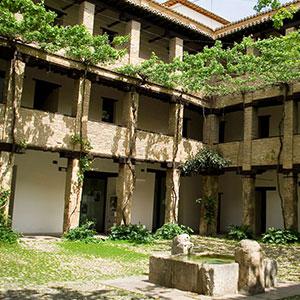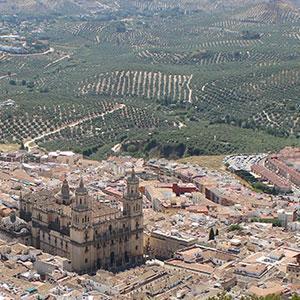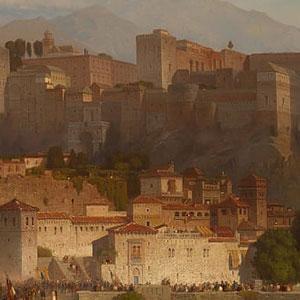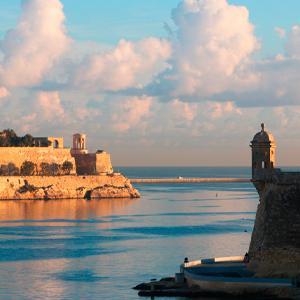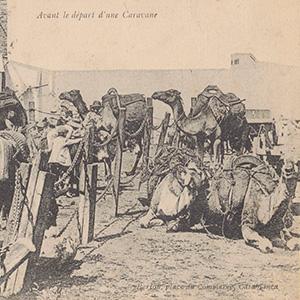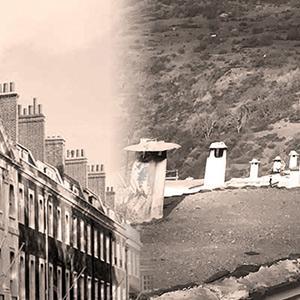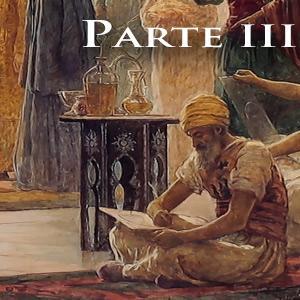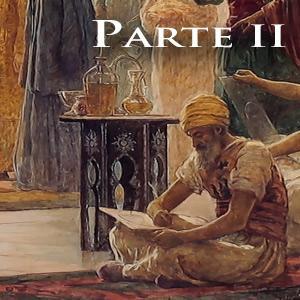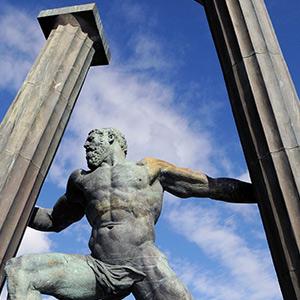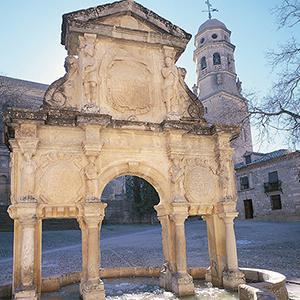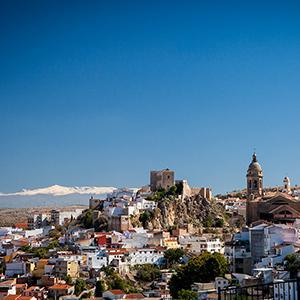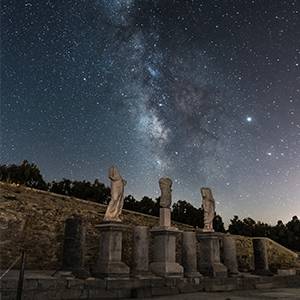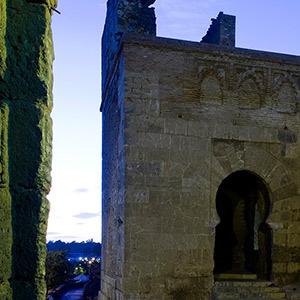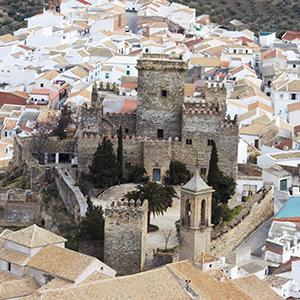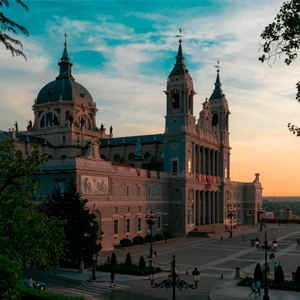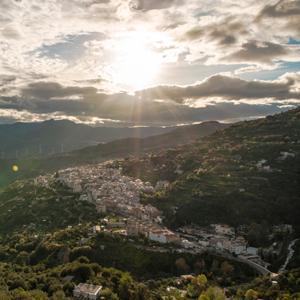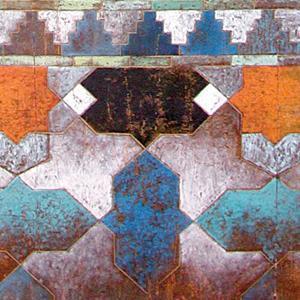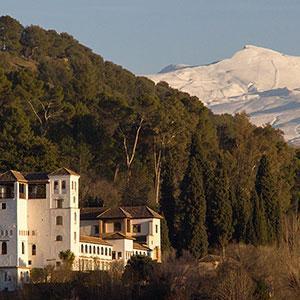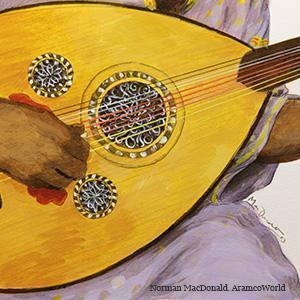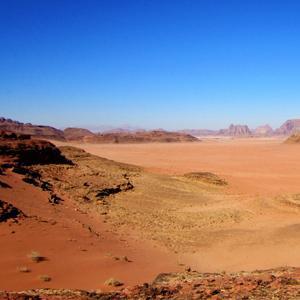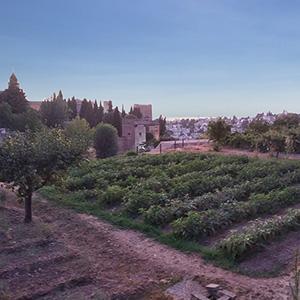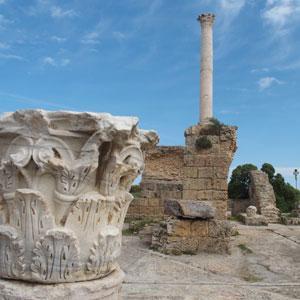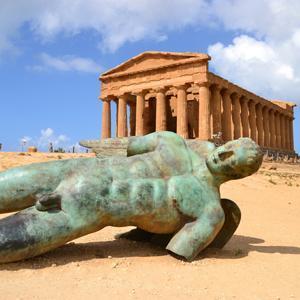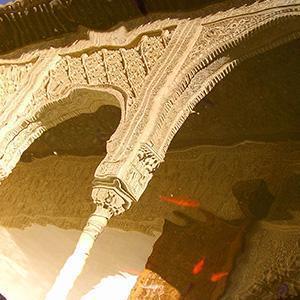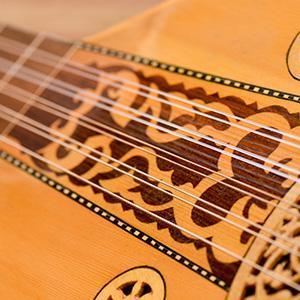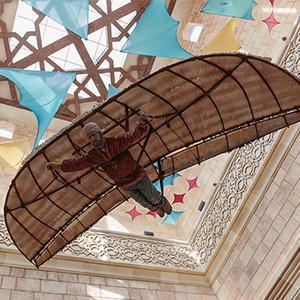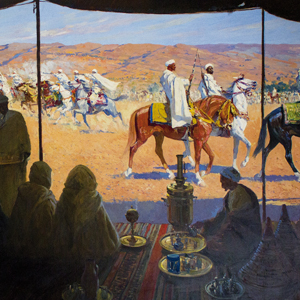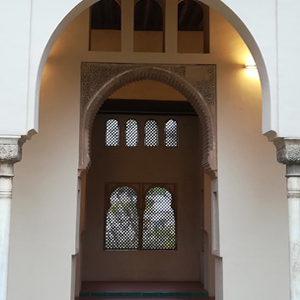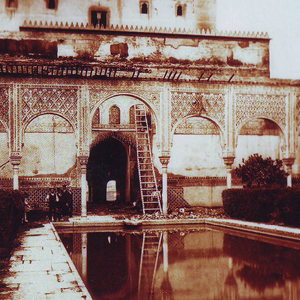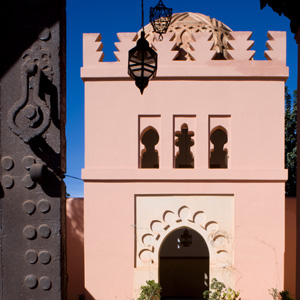Magazine
Ibn Arabi of Murcia: al-Shaykh al-Akbar.
The Greatest Master
Ibn Arabi of Murcia was the forerunner of what seven centuries later would be the philosophy of ecumenism. His doctrine, in force along the centuries, preached that the religion of love shall make of the human being a new man, tolerant and universal. Hence, “the universal man involves in himself every reality of existence”
A knight without sword.
Boabdil’s (three) swords
According to the Arabist don Basilio Pavón Maldonado, it is a Granadan work dating from the 15th century. As a curious fact, let us mention that among the preserved rapiers produced in Granada at that time, this one bears the closest resemblance to the one painted by El Greco in his work The Martyrdom of Saint Maurice that is housed in El Escorial.
Samarkand, in the heart of the Silk Route
In the portico of Aq Saray palace, a statement addresses the traveller: ‘If you have doubt about our power then look upon our buildings’. The exuberant architecture with which Tamerlane, the so-called “universal ruler”, honoured the cities of the barren Asian steppe, found in Samarkand its most magnificent aesthetic expression.
Ibn al Shaykh of Malaga dazzled by the Lighthouse of Alexandria
PART II
The Lighthouse of Alexandría, the Seventh Wonder of the Ancient World, was widely described by Arab authors. Among them, Ibn al-Shaykh of Malaga produced one of the most accurate descriptions of all.
Ibn al Shaykh of Malaga dazzled by the Lighthouse of Alexandria
PART I
The Lighthouse of Alexandría, the Seventh Wonder of the Ancient World, was widely described by Arab authors. Among them, Ibn al-Shaykh of Malaga produced one of the most accurate descriptions of all.
Leo Africanus: caravan was his homeland and his life the most unexpected crossing
“Leo Africanus may have been for al-Andalus a kind of a posthumous son. Born at the moment his mother civilization was fading, he learned from exile not only its suffering but also its amazing changes. At times ambassador, at times slave, adventurer and…
Al-Ghazal from Byzantium to the Viking country
PART II
By the mid-9th century travelling across the Mediterranean could be very dangerous, especially for an old man like al-Gazal, who had earned a position in the Cordoban court good enough to be put out on such a hazardous endeavour.
Al-Ghazal from Byzantium to the Viking country
PART I
By the mid-9th century travelling across the Mediterranean could be very dangerous, especially for an old man like al-Gazal, who had earned a position in the Cordoban court good enough to be put out on such a hazardous endeavour.
Ibn Battuta, the traveller of Islam
Ibn Battuta of Tangiers (1304-1368) and his world-famous rihla, or travelogue, linked to the notion of traveling in search of knowledge, provides us with interesting descriptions of his journey along a vast geographical spread, which began with his pilgrimage to Mecca.
The mystery of the Moor King’s Water Mine of Ronda
As in every border town, defence posed one of the greatest challenges both in times of peace and during armed conflicts. The important outspot of Ronda, along the Route of Almoravids and Almohads, encapsulates the secret of its awesome water mine, whose story is hardly known.
Alí Mandri, from Granada to the White Dove. The emigration of a free man.
Tetouan, a city with a tendency to fly over the Strait of Gibraltar in the direction of Andalusia, perched like a white dove on the skirts its hills. It is named so: the White Dove, founded or having been re-founded …
The alhóndigas of Granada
All that remains of the intense commercial activity that took place in Granada in Nasrid times is the Yadida alhóndiga. Known as the Corral del Carbón (Coal Yard), it is the only one that is preserved in Spain. Today it hosts, among other cultural institutions, the headquarters of the Fundación El legado andalusí (The Legacy of al-Andalus Foundation).
The story of the Arma, the Andalusi diaspora in sub-Saharan Africa
After the revolt of the Alpujarras (1568), second-generation Christians established themselves in today’s Morocco and other places along the African Mediterranean coast and sub-Saharan Africa.
Jaén, for whoever looks for it
From the stiff crests in mount Santa Catalina, its imposing castle guards a city which from the times of Carthaginian general Hannibal, has not stopped covering the brilliant pages of it history, illustrated by its superb architectural heritage.
The discovery of Granada by the French Romantics
The fact that Granada continues being one of the most dynamic European destinations today, has without doubt its origin in the 19th century, a time in which art is going to centre on this geography and be disseminated, in particular, through French literature. Spain, but specially Andalucía, have aroused …
Ignacio de las Casas, a morisco wise Jesuit a peacemaker between two worlds
PART II
The upheavals that Granadan society experienced in the 16th century, after the uncanny finding of the so-called Sacromonte Leaden Books, and the Morisco issue, gave voice to…
Ignacio de las Casas, a morisco wise Jesuit a peacemaker between two worlds
PART I
The upheavals that Granadan society experienced in the 16th century, after the uncanny finding of the so-called Sacromonte Leaden Books, and the Morisco issue, gave voice to…
Montefrío, the horizon as a limit
The area of Montefrío resounds with antiquity; its roots go deep into prehistory and every one of the people that have settled in its places have left their marks in stone. It is one of the attractions on the Route of Washington Irving…
Münzer, a journey through Spain in the sixteenth century
PART II
In the year 1495, just three years after the Catholic Monarchs had conquered Granada, a German traveller, Doctor Jerome Münzer visited Granada. He left us an important chronicle about …
Münzer, a journey through Spain in the sixteenth century
PART I
In the year 1495, just three years after the Catholic Monarchs had conquered Granada, a German traveller, Doctor Jerome Münzer visited Granada. He left us an important chronicle about …
Valle del Zalabí. A primitive landscape
There are places whose landscape speaks volumes. In the north of the province of Granada, scarcely two kilometres from Guadix, the Valle del Zalabí (Valley of Zalabí) unfolds in a singular…
From the al-Andalus that still survives
Research focused on the legacy of al-Andalus in Spain has increased over the last years. There are and always will be discrepancies about particular facts of the story of our country, for the perspective…
The African deed of Judar Pasha
Research focused on the legacy of al-Andalus in Spain has increased over the last years. There are and always will be discrepancies about particular facts of the story of our country, for the perspective …
Al-Idrisi and The book of Roger
Antequera: art, history and culture
Napoleon’s encyclopedia, the richest museum in the world
Marchena, an inheritance with no waste
Malta’s Mediterranean sayings, a linguistic conundrum
Arcos de la Frontera, a dragon made in lime and stone
Ali Bey, or Domingo Badía, a spanish traveller of the enlightenment around the Arab world
Almería
The gold of the Alhambra
Castillo de Locubín. The anvil of time
Gerald Brenan, and the literary spirit of Bloomsbury in the Alpujarra
Medina Sidonia, a crown without a king
The Blind Man of Cabra and popular poetry in al-Andalus.
Part III
Osuna, landscape and figures
The Blind Man of Cabra and popular poetry in al-Andalus.
Part II
Fondón, kingdom of El Rey Chico according to legend
The Blind Man of Cabra and popular poetry in al-Andalus.
Part I
Jerez, city of three worlds
Images of mills and the Albolafia of Córdoba
Grazalema, on the underside of History
Beyond the pillars of Hercules
Part II
The Arabs knew the Canary Islands through Ptolemy, and called them Jaza’ir al-Khalidat, “The Eternal Isles,” presumably a version of the Greek name. Some sources speak of these islands as if they were legendary, telling us for example …
Beyond the pillars of Hercules
Part I
For the Latin Middle Ages, the Atlantic was Mare Tenebrosum; for the Arabs, Bahr al-Zulamat. Both meant “The Sea of Darkness,” and anyone who has looked west …
Baeza, oblivion and presence
Bibarrambla, from al-Andalus to the Christian era
Loja, amid snow and wheat
Al-Andalus and Occitania
Baena, in the High Land domains
The vanished Arab monuments of Granada
Niebla, alone and distant
Benjamin of Tudela: through sacred geography
The account, of an anthropological nature, collects observations from the countries he visited in the 12th century, with emphasis on Jewish communities.
Zuheros, the memorable view
Abu Hamid al-Garnati and the wonders of the world
Espejo, the sentinel on the hill
Saints and romerías in the Maghreb and Andalusia
Ronda, the city of a hundred views
Priego in its labyrinth
Maŷrit, el Madrid andalusí (Parte II)
Madjrit, al-Andalus’ Madrid (Part I)
Madrid once belonged to al-Andalus . Scarcely 150 years after Tarik disembarked on the Iberian Peninsula, Muhammad Ibn Abd-er-Rahman al-Awsat, emir of Córdoba, decided to build…
Lanjarón: A poet’s dream
Glorious tiles
The awareness of landscape in al-Andalus
The renowned historian Ibn al-Khatib, stateman, philosopher, literary man and doctor …
Ziryab, the amazing story of the singer from Baghdad
Qusayr ‘Amra. The umayyad palace of the desert (Part II)
Qusayr ‘Amra. The umayyad palace of the desert (Part I)
Orchards of al-Andalus. The development of domestic agriculture
Venice, the temptation of the Orient (Part II)
Venice, the temptation of the Orient (Part I)
Ifriqiya, a cultural and commercial center in Northern Africa
The silk from Granada
Sicily’s Mediterranean Heritage
The Aquatic Gardens
The Music of Al-Andalus, a Shared Heritage
Ibn Firnas, craving to fly
Mariano Bertuchi and the sister cities, Granada and Tetouan
Dar al-Horra, the story of a house of noble lineage
When The Alhambra was in ruins
Al-Mutamid: a politician behind the poet


